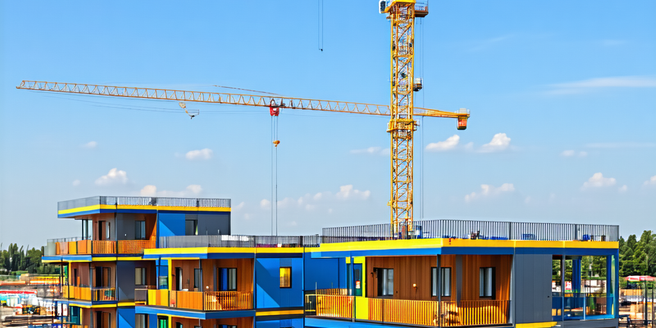Innovative Construction Techniques
In addressing the issue of affordable housing, innovative construction techniques have become critical. Prefabrication and modular construction are rapidly gaining traction for their cost-efficiency and speed. By assembling sections off-site, construction timelines are drastically reduced, leading to significant savings. Moreover, 3D printing technology has emerged as a game-changer, allowing for the creation of building components with precision and reduced waste. These methods not only minimize labor costs but also result in high-quality housing structures that are durable and sustainable. Lean construction practices further enhance efficiency by minimizing resource usage. The integration of these advanced techniques is setting a new standard for affordable housing, making homes more accessible, particularly for low-income populations, while fostering innovation within the construction industry.
Sustainable Housing Materials
The use of sustainable materials is at the forefront of making affordable housing environmentally friendly and cost-effective. Natural materials like bamboo and cork provide renewable and durable options, while recycled steel and concrete offer strength and resiliency. The incorporation of green insulation, such as recycled denim and cellulose, enhances energy efficiency, reducing utility costs for residents. Advances in biocomposite materials, blending biological and synthetic substances, offer innovative alternatives for building elements. Low-VOC paints and sealants ensure healthier indoor air quality. Together, these materials contribute to significantly lowering the carbon footprint of affordable housing projects. While initial investments might be needed, the long-term operational savings make these materials a viable choice. Users also benefit from healthier environments, aligning sustainability with the urgent need for affordable living solutions.
Government Policies and Initiatives
Effective government policies are vital in stimulating the development of affordable housing. Incentivizing private developers through tax credits and grants encourages investment in low-cost housing projects. Zoning reforms can facilitate the availability of land by allowing for higher-density housing and mixed-used developments. Inclusionary housing policies mandate the allocation of a percentage of new projects to be affordable units. Moreover, partnerships between public and private sectors can leverage resources and expertise to expand housing opportunities. National and local government initiatives that support housing cooperatives also provide affordable, community-driven housing solutions. Streamlining the permitting process reduces construction costs and speeds up project completion. Through these policies and initiatives, governments play a pivotal role in reducing housing shortages and creating sustainable, affordable living environments for communities.
The Role of Technology in Affordable Housing
Technology is playing a transformative role in revolutionizing affordable housing. Digital platforms are streamlining the design and construction process with advanced modeling software like BIM, which enhances precision and efficiency. Smart home technologies, although often seen as a luxury, are becoming more affordable, contributing to energy efficiency and cost savings for residents. IoT devices are used to monitor building systems, optimizing maintenance and reducing costs. Furthermore, technology aids in financial inclusion by offering seamless digital payment solutions for rent and micro-financing options for owning homes. Mobile applications connect communities, providing residents access to support services and resources. As technology continues to advance, its integration into affordable housing holds the promise of enhancing liveability, sustainability, and reducing economic burdens on lower-income households.
Community-Centric Housing Solutions
Community-centric housing focuses on integrating residents’ needs, fostering a supportive living environment. This approach emphasizes participatory design, where future residents collaborate in planning, ensuring that homes and common areas meet their specific requirements. Co-housing models, which include shared spaces for dining and recreation, encourage social interaction and shared responsibilities among residents. Additionally, community land trusts offer a way to secure long-term affordability by holding land in trust for developments, thus shielding residents from market fluctuations. Mixed-income developments promote diversity and economic integration, enriching community life. Such solutions address not just the physical aspects of housing but also the social fabric, helping create vibrant, resilient communities. By prioritizing inclusivity and self-sufficiency, community-centric models become vital in meeting the complex needs of affordable housing.
Challenges and Opportunities Ahead
As we look towards the future, the path to affordable housing is lined with both challenges and opportunities. One of the primary hurdles remains the availability of land in urban areas, where housing demand is highest. Rising construction costs also pose a significant obstacle. However, opportunities abound in leveraging new technologies and innovative financing models that can reduce costs and enhance affordability. Policymakers have the chance to implement zoning reforms and incentivize affordable housing development. The focus on sustainability opens avenues for using eco-friendly materials and designs that offer long-term savings. Understanding community needs better through data analytics can lead to more targeted housing solutions. While challenges persist, collaboration across sectors holds the potential to turn these challenges into opportunities, ultimately paving the way for more accessible, affordable housing.



